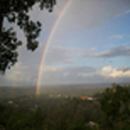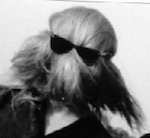Hi All,
Is there a big difference between toslink cables? I have read that splitting an optical signal using an optical cable splitter can result in a loss of signal strength, but this loss is typically minimal and does not significantly affect the performance of the connected devices. So in my mind if the difference made by splitting the signal is minimal, then how much of a difference can there be between the full signal not split on different cables? I have also read that the only way to improve the sound using an optical connection is to get a component with better DAC's. I welcome all opinions and experiences.
Have a blessed day,
Mike
toslink cables
3 posts
• Page 1 of 1
toslink cables
Wanna make God laugh, ...Tell Him your plans
-

Old School - Premium Member

- Posts: 422
- Joined: Thu Jun 16, 2011 8:42 pm
- Location: Elm City NC
Re: toslink cables
Mike,
As most of my gear uses Toslink cables, I have found that there is a difference (basically in reliability) between using the very thin (approx 1.5mm diam) and the somewhat thicker ones (approx 3mm diam).
I have never done a test where I have used both diameter cables to see if there is a dfifference in the sound produced or if there is a difference if using different sample rates (I have generally used 48k, but may have to use 44k with one of my desks --- thanks to info from Y-my-R).
I have also found that the block type plugs work better than the barrel type plugs (they look a bit like a power adaptor DC plug), although these are not as common these days, the block type plugs seem to fit tighter.
Not sure if the above helps and apologies for partly hijacking your other main thread about clocking.
David
As most of my gear uses Toslink cables, I have found that there is a difference (basically in reliability) between using the very thin (approx 1.5mm diam) and the somewhat thicker ones (approx 3mm diam).
I have never done a test where I have used both diameter cables to see if there is a dfifference in the sound produced or if there is a difference if using different sample rates (I have generally used 48k, but may have to use 44k with one of my desks --- thanks to info from Y-my-R).
I have also found that the block type plugs work better than the barrel type plugs (they look a bit like a power adaptor DC plug), although these are not as common these days, the block type plugs seem to fit tighter.
Not sure if the above helps and apologies for partly hijacking your other main thread about clocking.
David
-

csp - Premium Member

- Posts: 679
- Joined: Mon Dec 15, 2008 4:00 am
- Location: Gold Coast region, Queensland, Australia
Re: toslink cables
I have ever only used digital patchbays to "mult" optical signals. But these kinds of patchbays connect to their own power source, so there's no loss in signal strength when the signal gets duplicated.
I did that back in 1998 or so, with a Digidesign ADAT interface and an old Blackface ADAT, but routed the I/O from both, the ADAT interface and the ADAT to a Fostex DP8 digital patchbay, and sent the same source signals to a Yamaha 01v mixer, in addition to between the ADAT interface and the ADAT. The ADAT Interface/ADAT needed to have a "closed loop" and an extra 9-pin D-Sub sync cable connected, in order to make the sync work (and I did the Timecode sync via a Motu MIDI Timepiece AV, back then).
But by "duplicating" the signal coming out of the ADAT and the ADAT interface, and sending it back where that signal was needed, but ALSO sending it to that 01v mixer, it all worked perfectly, together. I could still even pull ADAT tape backups of the tracks running in the computer with that setup.
Now I'm having the ADAT I/O from my Apollo 8, my PreSonus Quantum, and two Tape I/O cards on the D8B (DIO8), as well as the Alt I/O (OPT8) on the D8B, go to an M-Audio Digipatch digital patchbay. A third optical cable pair is connected directly between the Quantum and the 3rd Tape I/O card (DIO8) - not enough optical I/O on that patchbay to add that (that's why I'm still looking for a Frontier Design Apache patchbay, since that one has 12 optical pairs). Oh, and there's also an M-Audio Octane connected to the digital patchbay, that I mostly used for it's line-input to A/D converters, to feed analog signals back into the Alt I/O's ADAT input as an FX return.
All of this works flawlessly (...everything runs off of the same word clock... and a few more digital devices. Nowadays, I only use the digital patchbay for ADAT, and made S/PDIF patchbay out of an old SDI BNC panel... to maintain the 75 Ohms needed, that wouldn't be there if using an RCA patchbay).
Anyway... my point is, if the splitter has it's own power supply, there should be no signal loss.
What I DID read before, but haven't tried myself is, that "glass fiber" cables are superior to plastic based optical/TOSlink cables. Supposedly, there's less jitter happening over the glass-fiber based cables.
Personally, since I'm always strapped for cash, I've always been using cheap plastic-core optical cables. Works fine from what I can tell, but who knows... there might be an improvement in imaging or the stereo field, etc. if there's less jitter happening. But at least I don't consciously "hear" that there'd be jitter in my setup (but there ALWAYS is... just depends on if it's so much that it impacts the overall quality).
So, I'd just get a splitter that has its own power supply, and then you should be fine.
I did that back in 1998 or so, with a Digidesign ADAT interface and an old Blackface ADAT, but routed the I/O from both, the ADAT interface and the ADAT to a Fostex DP8 digital patchbay, and sent the same source signals to a Yamaha 01v mixer, in addition to between the ADAT interface and the ADAT. The ADAT Interface/ADAT needed to have a "closed loop" and an extra 9-pin D-Sub sync cable connected, in order to make the sync work (and I did the Timecode sync via a Motu MIDI Timepiece AV, back then).
But by "duplicating" the signal coming out of the ADAT and the ADAT interface, and sending it back where that signal was needed, but ALSO sending it to that 01v mixer, it all worked perfectly, together. I could still even pull ADAT tape backups of the tracks running in the computer with that setup.
Now I'm having the ADAT I/O from my Apollo 8, my PreSonus Quantum, and two Tape I/O cards on the D8B (DIO8), as well as the Alt I/O (OPT8) on the D8B, go to an M-Audio Digipatch digital patchbay. A third optical cable pair is connected directly between the Quantum and the 3rd Tape I/O card (DIO8) - not enough optical I/O on that patchbay to add that (that's why I'm still looking for a Frontier Design Apache patchbay, since that one has 12 optical pairs). Oh, and there's also an M-Audio Octane connected to the digital patchbay, that I mostly used for it's line-input to A/D converters, to feed analog signals back into the Alt I/O's ADAT input as an FX return.
All of this works flawlessly (...everything runs off of the same word clock... and a few more digital devices. Nowadays, I only use the digital patchbay for ADAT, and made S/PDIF patchbay out of an old SDI BNC panel... to maintain the 75 Ohms needed, that wouldn't be there if using an RCA patchbay).
Anyway... my point is, if the splitter has it's own power supply, there should be no signal loss.
What I DID read before, but haven't tried myself is, that "glass fiber" cables are superior to plastic based optical/TOSlink cables. Supposedly, there's less jitter happening over the glass-fiber based cables.
Personally, since I'm always strapped for cash, I've always been using cheap plastic-core optical cables. Works fine from what I can tell, but who knows... there might be an improvement in imaging or the stereo field, etc. if there's less jitter happening. But at least I don't consciously "hear" that there'd be jitter in my setup (but there ALWAYS is... just depends on if it's so much that it impacts the overall quality).
So, I'd just get a splitter that has its own power supply, and then you should be fine.
-

Y-my-R - Premium Member

- Posts: 590
- Joined: Mon May 29, 2017 12:14 am
- Location: Van Nuys, CA
3 posts
• Page 1 of 1
Who is online
Users browsing this forum: Google [Bot] and 33 guests